‘Minimalism’- A movement in sculptural arts and paintings that came into revolution within the mid-Twentieth Century, It promoted and characterized the use of Simple, massive forms. Since then the meaning has been evolving on a widened scale across the globe. A sense of different perspectives depicting minimalism can be perceived in Fashion and Style to Music and Arts as Design Intervention.
Minimalistic style is changing a lot of common basic principles like reducing unit area of Solid Surfaces, sharp lines, low furnishing, and pastel shades. Although, recent interventions include softer shapes, a lot of plain shades of color, and texture as an element.
Vogue of the Era being a Minimalistic approach of Design, thus an individual can choose the Spaces, Lighting and Objects to play vital roles for Clutter-Free Spaces. This vogue demands the decrease in furnishings to the bare necessities, for a space of objects curated to deliver impactful areas. Somehow, this can be boring, but also it is a practical and extremely spectacular approach that is daring for Designers’ Ideologies.
A list of Ideas and Experimentations with simple and sober interior for planned minimalist design is been quoted as follows:
1. Clean Edges and Flat Planes
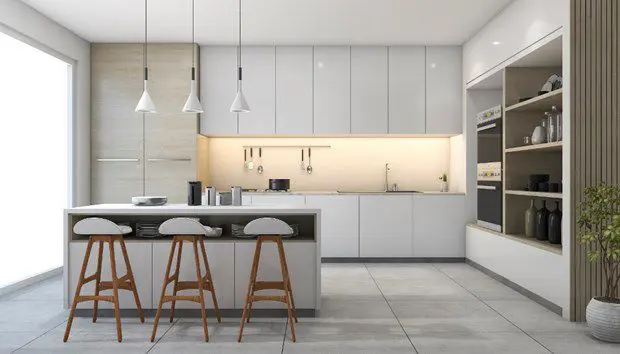
Entities like furniture and artifacts in a clutter-free home should represent Clear, Defined Lines and Curves with corresponding flat Surfaces. As shown in image Cabinets, Drawers and Tabletop represents clean lines due to omission of handles on cabinets and excess accessories to create a Soothing Effect.
2. Inclusion of Light
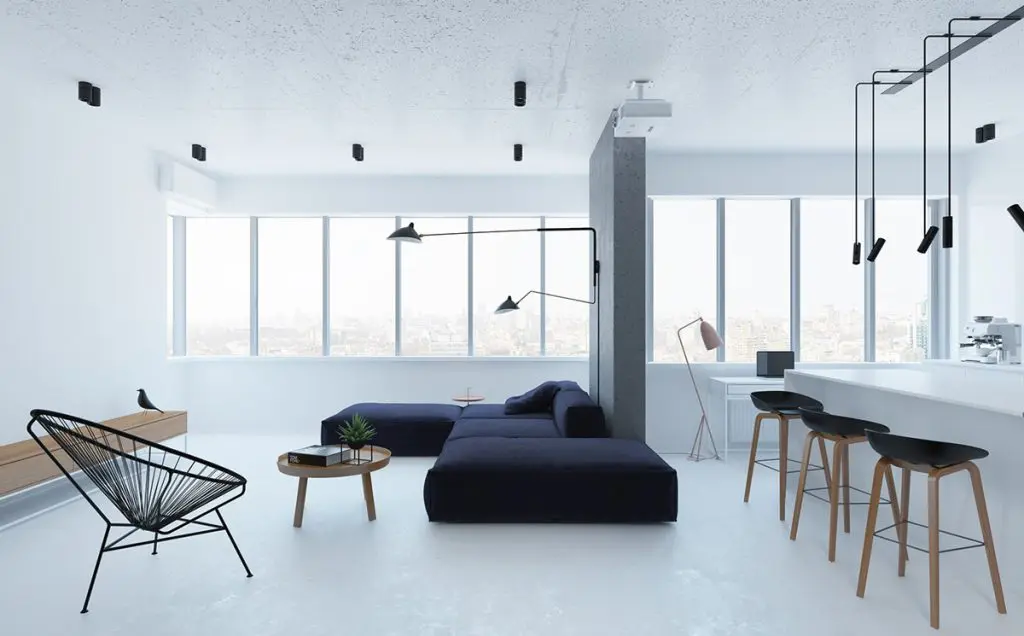
Color schemes like subtle tones of white, bare grey shades, and pastel palette are innate for minimal designs. An individual can also opt for brighter colors, but limit the choices to one or two shades as an element of focus. The picture uses shades of grey and white to create a balanced lit room. Even the marble top of the dinner table intensifies the minimalist style.
3. Design by Decluttering
Having a minimalist home means you need to de-clutter. And to do so, you’ll have to edit what your shelves and tables display. Stick to essentials only and stock the rest in cabinets.
Organizing the elements in a manner that depicts any simpler pattern can also help in the same manner.
The kitchen in the picture shows how only a few precisely-chosen elements have made it to the counter. Also, the choice of a white kitchen gives the impression of a lot more space.

4. Implement texture
Texture in minimal designs is generally plain, simple, and a good visual element.
You can make things alluring by trying different textures. The neutral color tones match perfectly with textured surfaces.
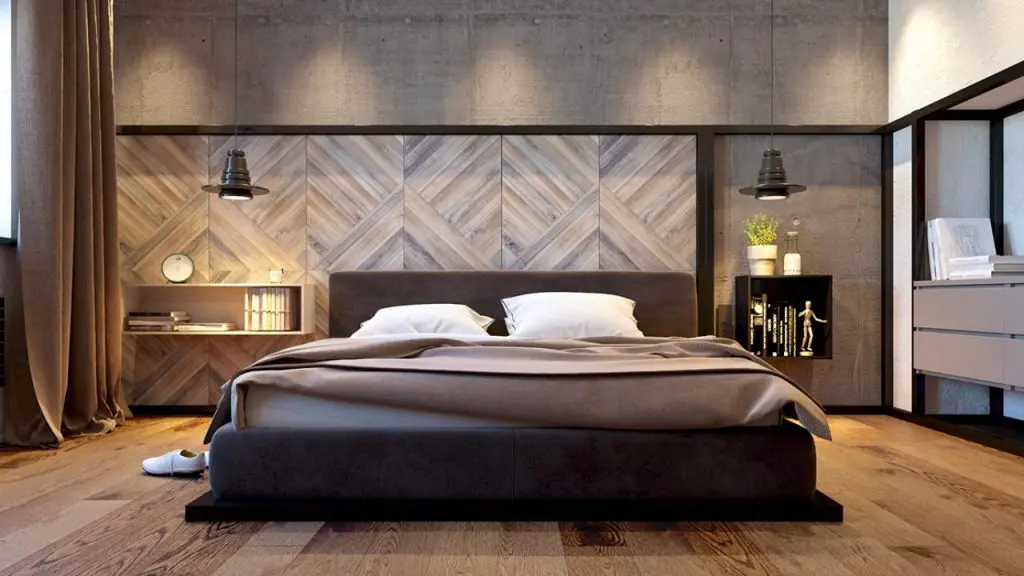
In the image of the bedroom shown, an upholstered headboard and the wooden textured wallpaper perfectly complement each other and give the room an invigorating appeal.
5. include an Emphasized Element/ Accent Decor
Object or an art piece can be used as attention drawer i.e. eye-catching furniture, feature wall, large decoration artifact etc can be extra special and unique.
Elements like these compliment neutral, desolated spaces and turn out to be the feature element as per minimalism.
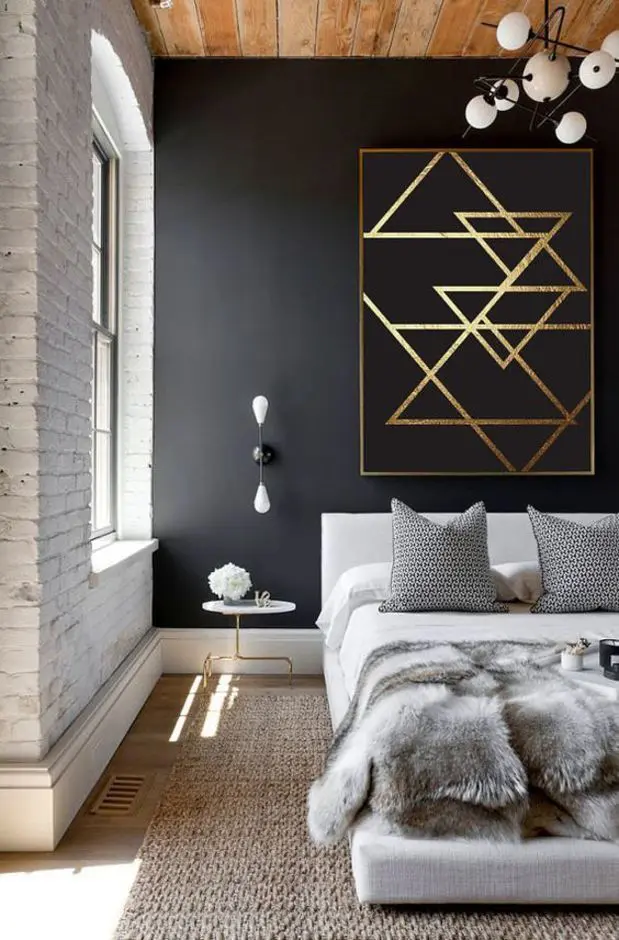
Designing a minimalist home doesn’t mean you need to avoid decorations and pop colors. The concept is to simply use decorative elements as accents and not deluge your home with a lot of things. Similarly, for artifacts, choose one focal piece instead of a group of small ones.
In this image of the bedroom, the art against the wall becomes a focal point and not a cluttered distraction.
6. Empty Spaces and Focal Points
Bare and clear space plays an important role in minimalist decor since space interacts with the objects and defines the look. Visual balance is achieved by having a focal point of the Elemental Spot on the wall.
This living room has plenty of bare desolated space and no unwanted disturbance. At the same time, some of the essential decors are on the walls.
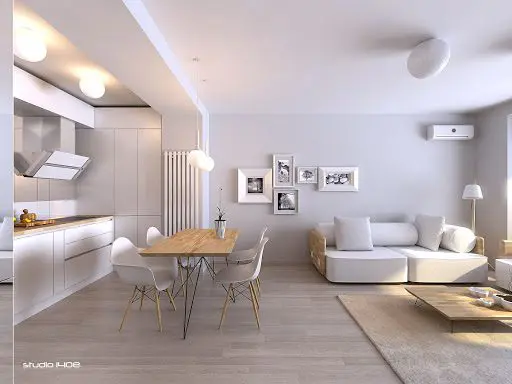
7. Consider using Simpler Patterns
Designing in minimal approach, may also require a break from tedium. Thus, an individual can opt for patterns, apply them on a mini-scale or restrained pattern that varies from tone to tone.
Curtains, Carpets and Cushions or Pillows are an option for pattern implication in minimal designs.
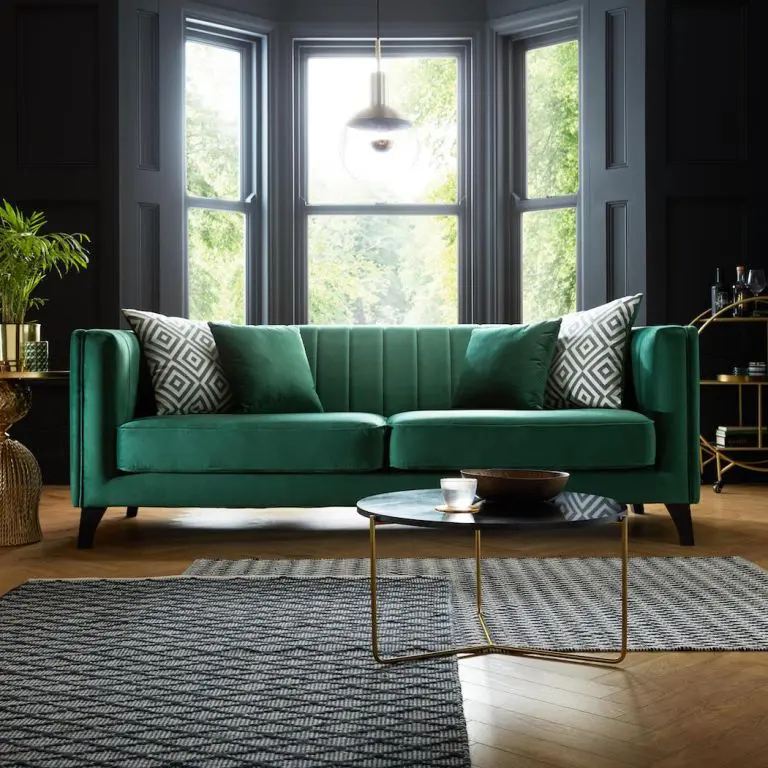
Conclusion
Designing is subjective and perceptual but, Design Tips can be followed, likely to be:
Keep It Simple, Use Smart Storage Solutions, Minimal Accessories and Decorations, Furnishings, Implementing a soothing Colour Template.
These all solutions can lead to Comfort quality improvement of a Space, inclusion of Lots of Air and Organized space which makes it easier for cleaning and repair purposes. bgMinimal clutter-free spaces not only organize Interior Spaces, they sort lifestyles too.
– Anshul Kulshrestha





